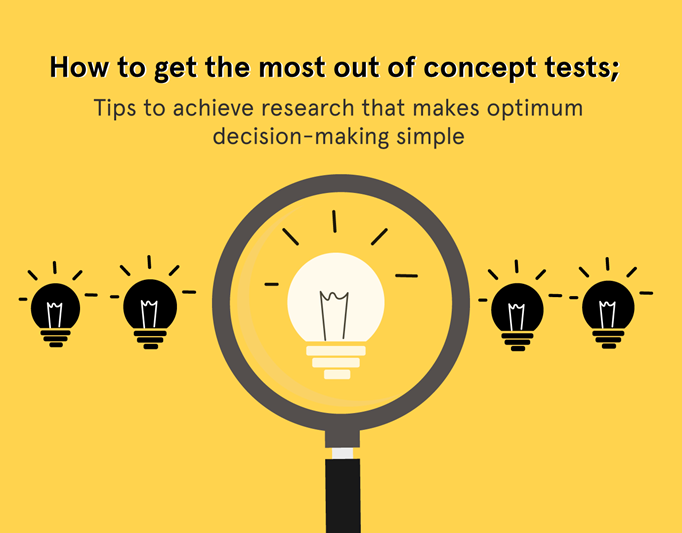
According to various academic studies, the majority of new products (as many as 80-90% in the consumer FMGC industry) fail within a few years after launching, It is therefore critical to develop and enhance a product/service, whilst also identifying potential barriers to purchase, before spending significant funds and resources, launching and marketing it. Market research should, therefore, play a key role in all companies’ NPD processes and one of the most cost-effective elements it can employ, is testing a product/service concept, amongst a representative sample of prospective customers.
A concept test is a fast and cost-effective way to achieve answers to key decisions before launch, and even before the production process has begun. It can also be incorporated as the first stage of a concept-product test, which would obviously require more research time and more initial spend.
Concepts used to test a new product/service need to :
· Be simple; the stimulus shown to consumers should provide as much information as they’d receive in a 30s ad, or what they might read on a product pack. The language should replicate what would be used in marketing communications, to accurate measure consumer interest.
· Consider using an image; sometimes it is a lot easier to communicate the concept using a picture, although care should be taken about what should be used e.g. colour or black & white, photo or a conceptual image.
· Include the main benefit; usually shown as the heading of the concept, it should focus on benefits, not features; in a short, snappy statement.
· Include a Reason-to-Believe; compelling support/evidence for how this product/service uniquely delivers the benefit being promised e.g. including certain ingredients, speed of use, method of delivery.
· Be priced or unpriced; an unpriced concept allows value perceptions to be measured via price sensitivity questions, whereas showing the price allows a more accurate purchase intention to be measured. However, it’s important to make sure consumers understand the price/value relationship, including pack sizes, portions, optional prices or different varieties.
Concept Test Research needs to:
- Use unbiased & accurate questions, asked in a non-leading way and in a context that models the mindset of a consumer in the real world, aiming to replicate the buying decision-making process, as much as possible. A short test might just include the key metrics of Purchase Intention, Price/Value and Uniqueness, whereas more detail may include other important attributes, like Convenience, Taste, Effectiveness or other questions designed to highlight any potential barriers to purchase.
- Be based on a representative sample, who are key to this particular product/service e.g. category buyers, regular visitors to specific types of stores, current users of similar services. Whilst the sample is usually non-rejecters of the product category, some thought should be given to ensuring the target audience isn’t too narrow, especially if the product is truly innovative/unique and could potentially bring people into the category.
- Provide simple answers, to all important elements of the concept, and make clear recommendations on anything that needs developing within it, whether there’s any further need for research or how the product/service just needs to be refined, in order to maximise success in the market.
Be supplied by an expert, independent research agency, meaning there’s added credibility, effectiveness, reliability and assurance, and that recommendations and insights, can be acted upon with confidence.
